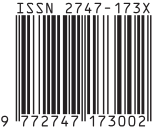Study of Neptunium, Americium and Protactinium Addition for 300MWth GFR with Uranium Carbide Fuel
DOI:
https://doi.org/10.19184/cerimre.v2i2.27368Abstract
A study of Neptunium, Americium, and Protactinium addition for GFR 300MWth with Uranium Carbide fuel has been performed. The purpose of this study was to determine the characteristics of addition Neptunium, Americium, and Protactinium in a 300MWth Gas-Cooled Fast Reactor. Neutronics calculation was design by using Standard Reactor Analysis Code (SRAC) version 2006 with data nuclides from JENDL-4.0. Neutronics calculations were initiated by calculating the fuel cell calculation (PIJ calculation) and continued with the reactor core calculation (CITATION calculation). The reactor core calculation used two-reactor core configurations, namely the homogeneous core configuration and heterogeneous core configuration. The Neptunium, Americium, and Protactinium additions were performed after obtaining the optimal condition from heterogeneous core configuration. The addition of Neptunium and Americium which are Spent Nuclear Fuel (SNF) from LWR fuels, aims to reduce the amount of Neptunium and Americium in the world and also to reduce the effective multiplication factor (k-eff) value from the reactor. The results obtained that the addition of Neptunium and Americium causes the k-eff value was decreased at the beginning of burn-up time, but increase at the end of burn-up time. It was because Neptunium and Americium absorb neutrons at the beginning of burn-up time and turns into fissile material at the end of burn-up time. The addition of protactinium in the reactor causes the k-eff value to be decreased both at the beginning of the burn-up time and at the end of the burn-up time. It happens because Protactinium absorbs neutrons both at the beginning of the burn-up time and at the end of the burn-up time. Therefore protactinium is often called a burnable poison.








